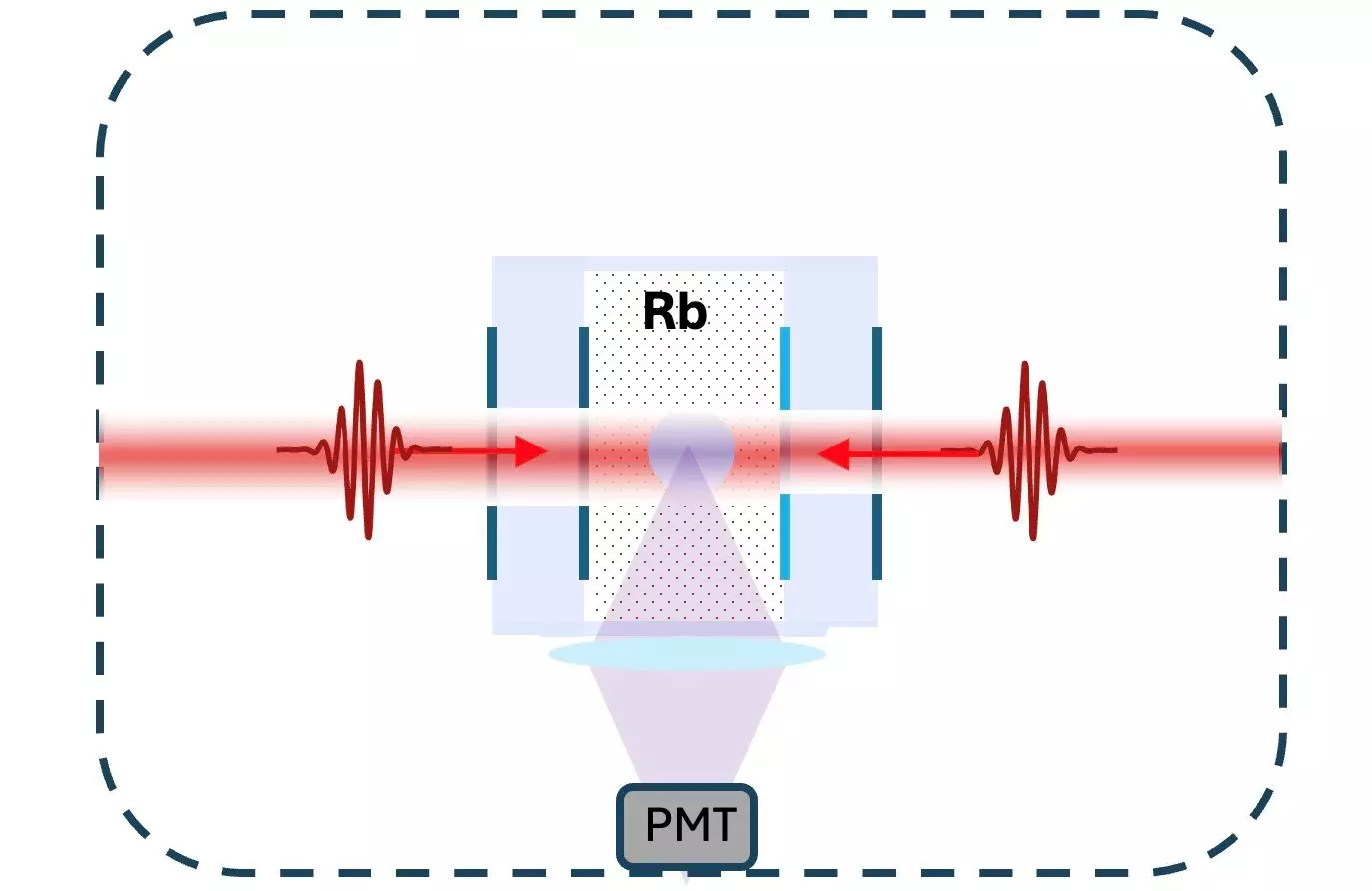The quest for precise time measurement has always been at the forefront of scientific and technological advancements. In recent years, researchers have made significant strides in the development of atomic clocks, instruments that have transformed the landscape of measurement and navigation. A recent innovation by a team led by Jason Jones at the University of Arizona presents an optical atomic clock that simplifies traditional designs, utilizing a single laser and operating at ambient temperatures. This groundbreaking advancement not only promises to enhance the accuracy and stability of atomic clocks but also aims to make them smaller and more accessible for various applications.
Traditionally, atomic clocks relied on complex designs involving multiple lasers and cryogenic environments to achieve high precision. While they provided exceptional accuracy, their bulkiness and the necessity for extreme cooling posed limitations for practical applications outside laboratory settings. Jason Jones highlights that, despite remarkable progress over the last twenty years in the performance of next-generation atomic clocks, many systems remain impractical for everyday use. The advent of a simplified atomic clock design could bridge the gap between advanced research and real-world utility.
The introduction of frequency comb technology has been pivotal in the evolution of atomic clocks. This innovative laser system emits thousands of evenly spaced frequencies, revolutionizing timekeeping methods. In their recent publication in the journal *Optics Letters*, Jones and his team describe an optical atomic clock that utilizes a frequency comb to directly induce a two-photon transition in rubidium-87 atoms. This novel approach effectively achieves the performance metrics of conventional optical atomic clocks that rely on dual lasers while significantly reducing system complexity.
The innovative clock devised by the research team exploits the two-photon transition mechanism, requiring the absorption of two photons for an atom to move to a higher energy level. By sending photons bidirectionally, the motion effects of one photon counterbalance those of the other, enabling the clock to function accurately even with hot atoms maintained at around 100°C. This elimination of the necessity for extreme cooling conditions is a major leap forward, paving the way for more compact designs without sacrificing performance.
Jones elucidates that the use of a frequency comb fundamentally alters how atomic excitation occurs. The frequency comb allows for an array of colors rather than relying on a single-color laser, dramatically simplifying the architecture of atomic clocks. This innovation not only enhances performance but also streamlines the manufacturing process, making the design more suitable for commercialization.
As advancements in atomic clock technology evolve, the implications for global positioning systems (GPS) and telecommunications are profound. Seth Erickson, the paper’s first author, notes that refining the performance of atomic clocks can bolster the GPS network, which is heavily dependent on the precision offered by satellite-based atomic timekeeping. Furthermore, the development of high-quality, accessible atomic clocks could revolutionize telecommunication networks, enabling faster data transmission and enhancing the capacity for simultaneous communication over shared channels.
Such advancements could significantly enhance everyday applications, potentially allowing for improved internet services, more reliable navigation systems, and a myriad of other technological benefits. The direct integration of high-performance optical atomic clocks into consumer technology could revolutionize how daily tasks are facilitated by accurate timing.
The research team is already focused on refining their optical atomic clock design, aiming to make it even smaller and more reliable over time. As laser technology continues to progress, the potential for integrating direct frequency comb approaches into various applications involving two-photon transitions further broadens. These developments may open up new avenues in both scientific exploration and practical technology.
As researchers press on with their quest for precision timekeeping, this team’s work represents not just a significant technical accomplishment but a transformative wave in how we perceive and utilize time. The prospect of compact, high-performance optical atomic clocks paves the way for innovations in technology that extend far beyond traditional boundaries, heralding an era where accurate time measurement becomes an even more integral part of our daily lives.

